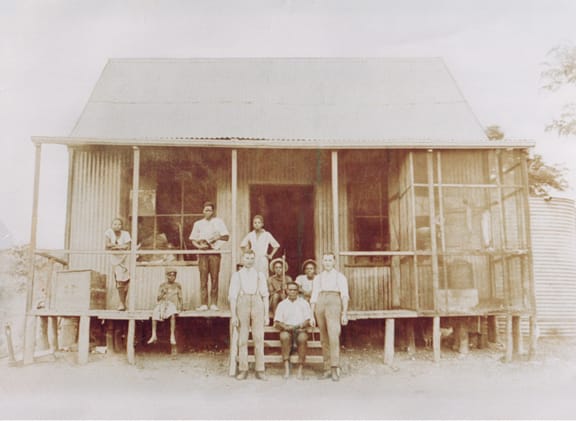The Depression, Que Que's Lucky Break

Solly Sloman’s Trading Store on the Gaika Mine late 1920’s
The Depression, Que Que’s Lucky Break
Most of Rhodesia’s pioneers came to look for gold, hoping to find another Witwatersrand. But 10% perished in the two rebellions in the 1890’s. Many left in poor health and out of pocket. The Globe and Phoenix Mine was reportedly the richest mine in the world, with one ounce of gold recovered for every ton of ore extracted, but it was entirely owned by shareholders in England. More than half of the revenue was profit. Only the modest wages of the white miners and pittances of the black laborers flowed into the Que Que economy–for half a century only the mine manager and the doctor had an indoor lavatory (toilet).
The Depression, Que Que’s Lucky Break
‘By 1925 Solly Sloman had the usual wood and iron store on piles on the Moss Mine. At one end he chopped up meat. There were burst bags of rapoka and everything all over the floor. At the other end of the counter he sold mirrors and pocket knives. Behind him were shelves of blankets of all sorts and rolls of limbo,’ remembers Gervas Hughes.
‘The mine flooded, losing the steam pumps. Meanwhile Solly was thinking of getting married and worried about building huts that would be comfortable and acceptable to his wife, but moveable and saleable too if the mine finished.”
The Moss Mine closed in 1927.
The Gaika Mine, thought to be the tail end of the Phoenix reef, closed in 1929 and reverted back to the parent company, the Chicago-Gaika. Solly Sloman, the Vowels brothers and J.H. Couper started a local company, Que Que Mines, and took it over in the depth of the Depression. Could they make the Gaika rise again like a phoenix?
The new company was able to restart the mine on a shoe string using the existing plant and no doubt many of the same workers, at a time when work was hard to find. Their capital, less than £5000, was thirty times less than the capital of the old Gaika Mine Company of nearly £140,000. They carefully removed the rich pillars in old stopes, mined blocks between levels and retreated old slimes dumps. In the glory years, 1931-35, they were able to issue a total of almost £100,000 in dividends: an average of more than 400% return on investment per annum for the local shareholders.
As a result of the depression, the price of gold, fixed for a century, at about $21.00/oz., fell briefly in 1931 to $17.00, to be fixed at nearly $34.00 in 1934, an increase of about 70%. In addition, the pound was devalued against the dollar so that by 1940, an ounce of gold had risen from £4.4 in 1932 to £8.5 in 1940, almost double. Que Que Mines therefore was able to continue mining after the rich ore left behind had been retrieved. They were able to generate an average annual revenue of £70,000, about a quarter more than the old company did in the years before 1914 (£55,000). From 1934 to 1944, it produced about 70% as much gold per year as the old Gaika Mine had in the eight years before 1914 with probably about the same tonnage milled. It continued to produce to 1978.
Solly moved his Triangle Store to the Gaika Mine and built a house for his wife, Rosa. The Sloman Brothers built the commercial empire that we all knew and loved. They helped many people. But Rosa chose to live in Cape Town with the children.
Many thanks to Tim Hughes for the excerpt from Matambega and Son, David Hirsch for number crunching, Leon Sloman for the photograph and as always to Bob Atkinson for mining articles and geological survey.
